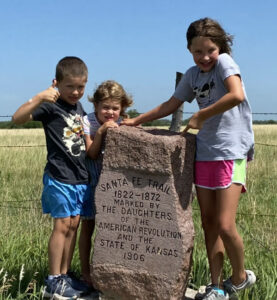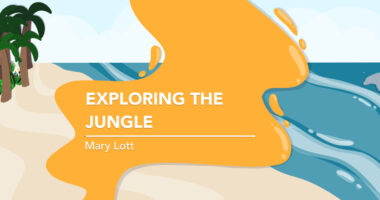Seeking landmarks of the Santa Fe Trail with cold agglutinin disease
How would I have fared on that westward walk in the 19th century? Not well.

Mile after weary mile, the oxen plodded ever westward. “When would we get to the end?” I wondered. My husband and I had started our journey several weeks earlier. At least I was riding on the wagon. Many in the wagon train were walking. I couldn’t do that.
These were my imaginings recently as my daughter, my grandchildren, and I set off to find the remnants of the Santa Fe Trail. She lives in Kansas, and I thought it’d be great fun to see with my own eyes what the stalwart pioneers experienced as they made their way west. I don’t think I could’ve made that journey in my present condition. I have cold agglutinin disease (CAD). I’m tired all the time.
Why I couldn’t have made the journey
Cold agglutinin disease is a blood disorder. For those of us who have it, cold temperatures are dangerous. At lowered temperatures, our red blood cells, in layman’s terms, clump together and are destroyed. We just don’t have enough red blood cells to carry oxygen and proteins for our bodies to function optimally.
CAD’s primary symptom is fatigue. Other symptoms may include pain, especially in our joints, but also in our chests, back, and legs. We can experience headaches and dizziness. The Santa Fe Trail challenged healthy people. I don’t think I would’ve stood a chance.
It was with great excitement on my part and resignation from my grandchildren that we set out to look for the trail. Their enjoyment increased when we found a marker along the way pointing to a hermit’s cave. We got out of our car, and the kids bounded down the steps to an opening in the rocks. I don’t “bound down” anywhere. I hung on tight to a flimsy railing. It was scant compensation for my dizziness from CAD.
The hermit who had lived there during the time of the westward migration ministered to people who made the journey. He left his cave in 1863 to accompany one wagon train 500 miles, walking all the way to New Mexico. I was just thankful that I made it down the short distance from the road to the cave and back again. At the time of his travels, the hermit would’ve been 62 years old. I’m in awe.
The cave didn’t satisfy my thirst to actually see and set foot upon the Santa Fe Trail. The cave was up a small hill. I don’t imagine that people traveling west would have their oxen or mules make that climb. My accommodating daughter, her children, and I pushed onward.
Our next stop was The Last Chance Store. It was the last place to obtain needed supplies, such as beans, bacon, and whiskey, before heading across the territories of the Arapaho, Cheyenne, Comanche, Kiowa, and Plains Apache peoples. Still, I wanted more.
Finding the real trail
At last, because I missed the actual marker I was looking for, we found my primary objective. When looking for a good place to turn around, my daughter spied a sign that read, “Ruts from Santa Fe Trail.” Eureka! She turned down the indicated side road.
Imagine! In the intervening years from when the trail ceased being used until now, ruts from the thousands of wagons can still be seen. The settlers encountered severe weather conditions, deprivations of food and water, and opposition from those who didn’t want them to make the journey. Many people died along the way.
I tried to imagine what I would’ve had to do along the trail, should I have been one of the settlers. As a CADdy, which is what those of us with CAD call ourselves, I’m more susceptible to infections, making it probable that I would’ve been sick along the way.
But CAD is a “hidden” disease, meaning others can’t tell by looking at us that we have it. Therefore, I would’ve been scorned and told I wasn’t pulling my weight or doing my fair share. That happens today. I doff my hat to those who did travel the trail in pursuit of their dream.
The fun for me
At a museum we stopped in near the Hermit’s Cave, I encountered a quote from the author Louis L’Amour. It said, “The thing to remember when traveling is that the trail is the thing, not the end of the trail. Travel too fast and you miss all you are traveling for.” I certainly enjoyed actually standing on a small part of the Santa Fe Trail.
Note: Cold Agglutinin Disease News is strictly a news and information website about the disease. It does not provide medical advice, diagnosis, or treatment. This content is not intended to be a substitute for professional medical advice, diagnosis, or treatment. Always seek the advice of your physician or other qualified health provider with any questions you may have regarding a medical condition. Never disregard professional medical advice or delay in seeking it because of something you have read on this website. The opinions expressed in this column are not those of Cold Agglutinin Disease News or its parent company, Bionews, and are intended to spark discussion about issues pertaining to cold agglutinin disease.









Leave a comment
Fill in the required fields to post. Your email address will not be published.